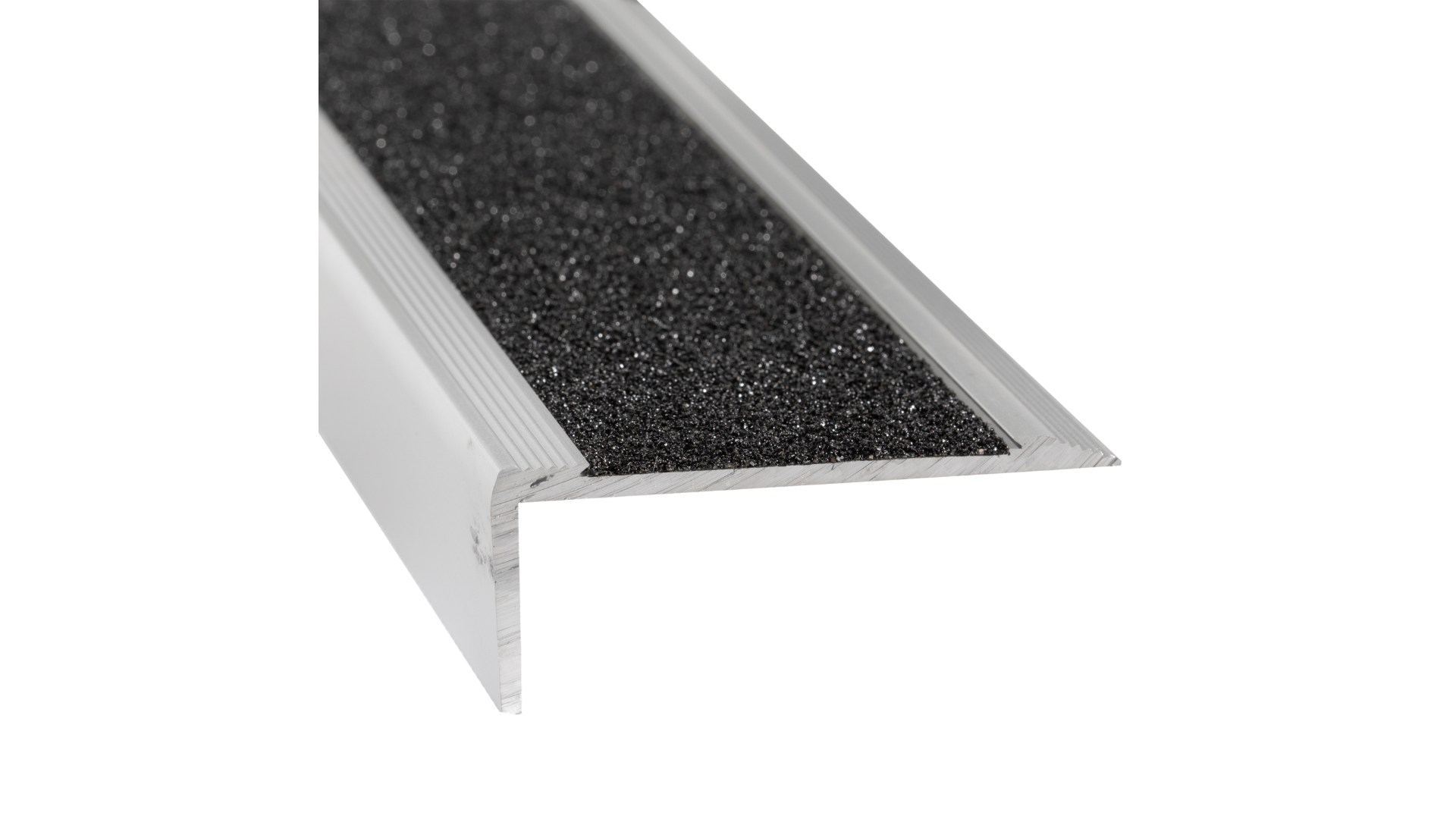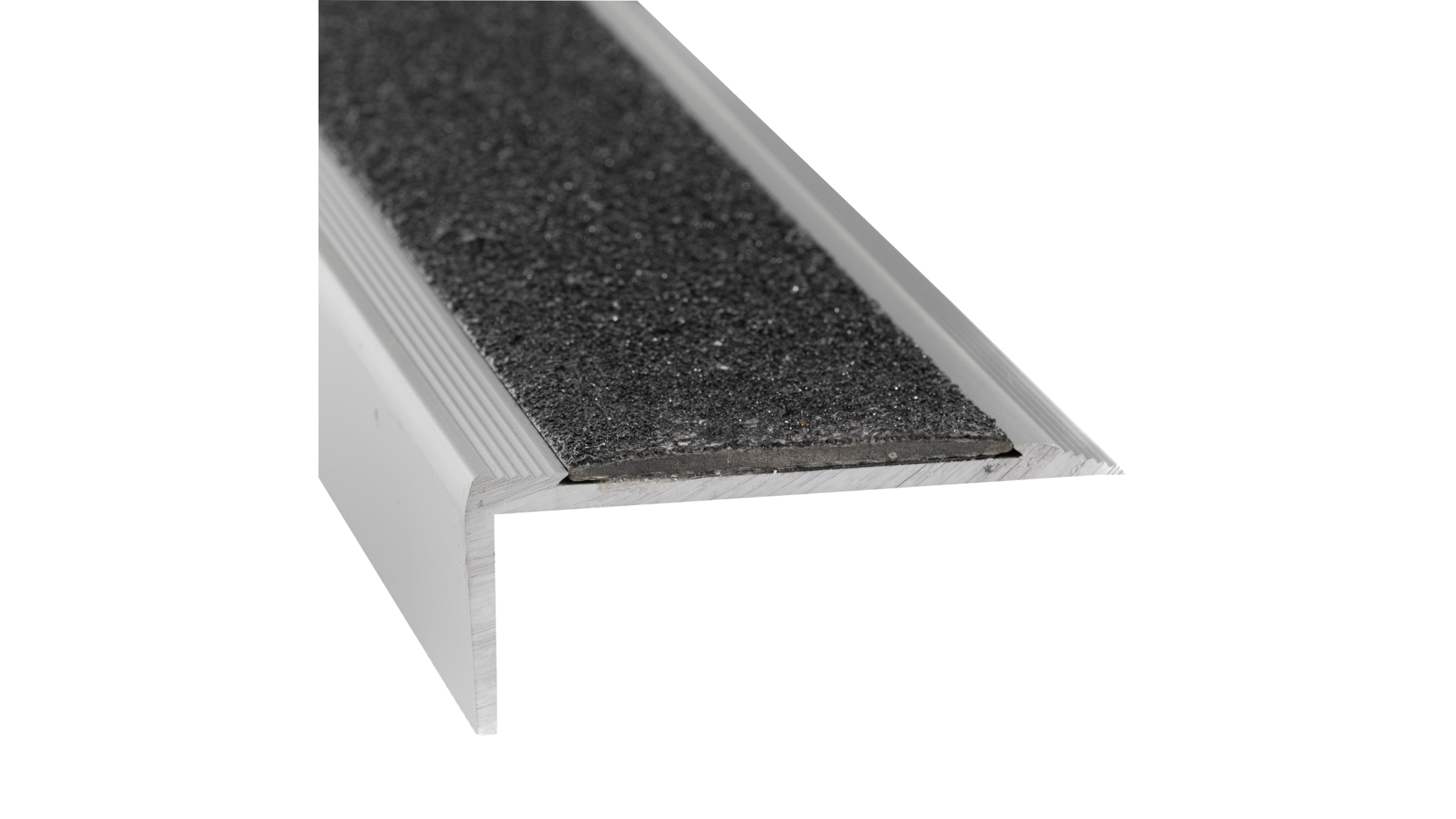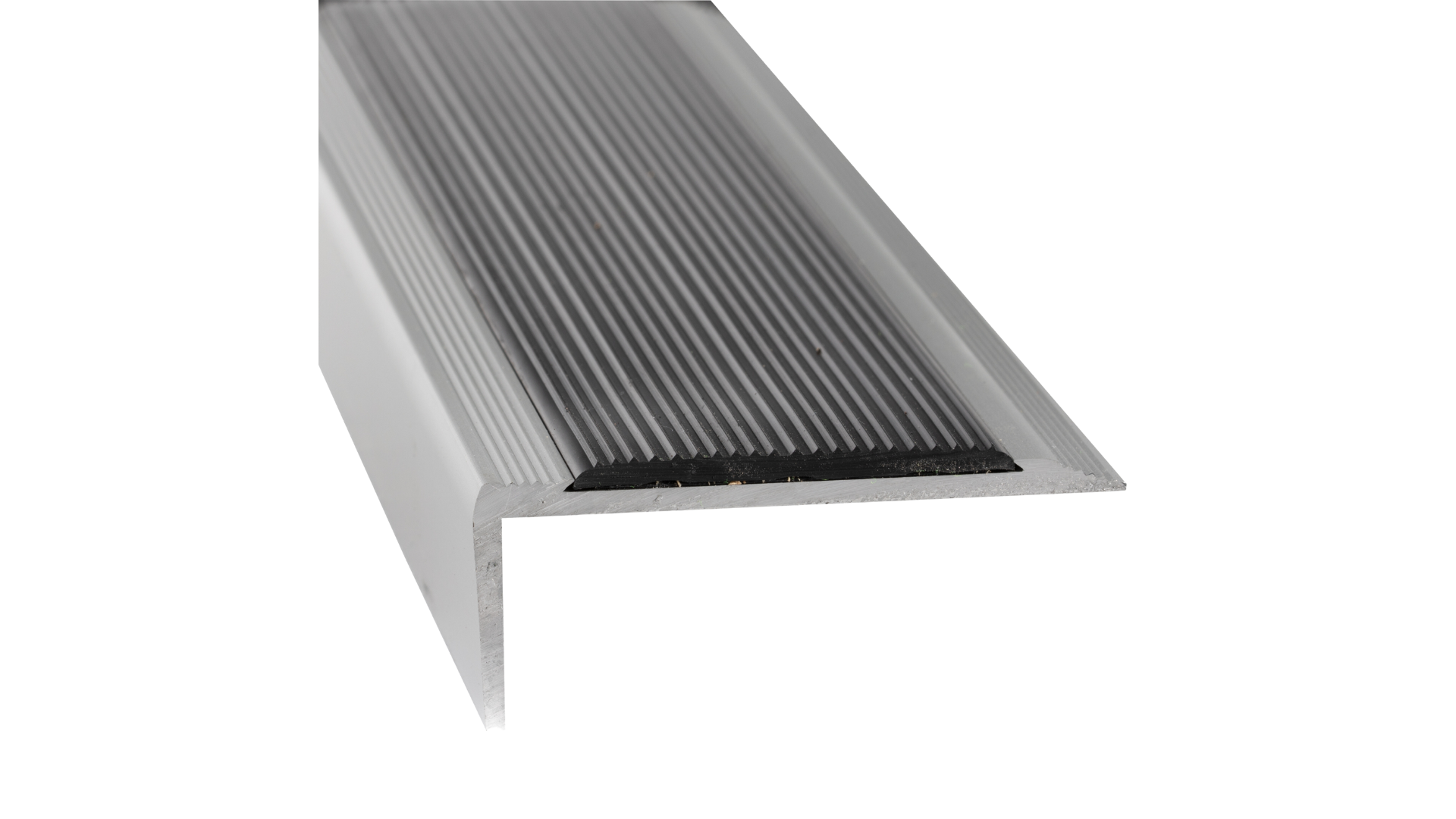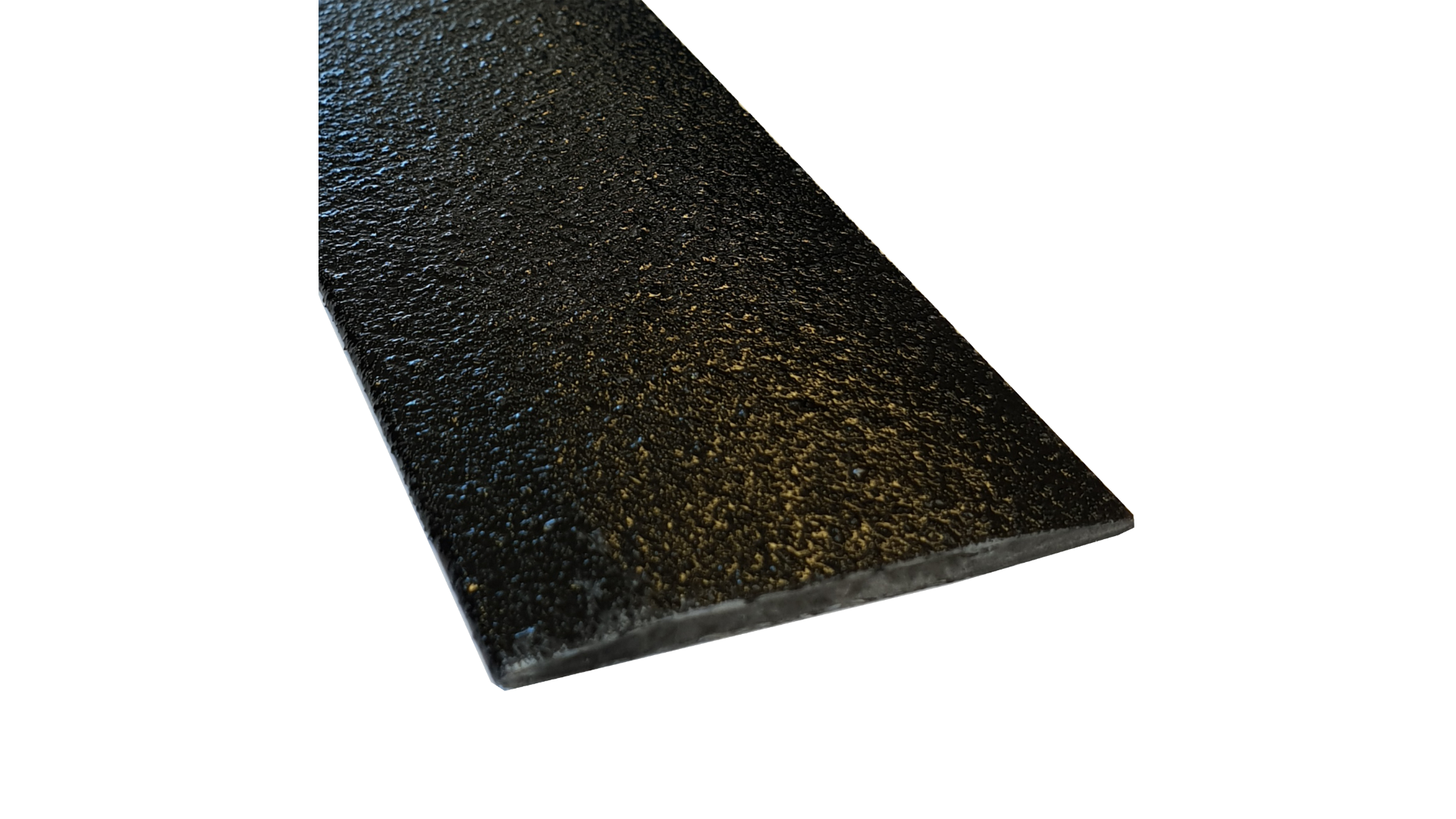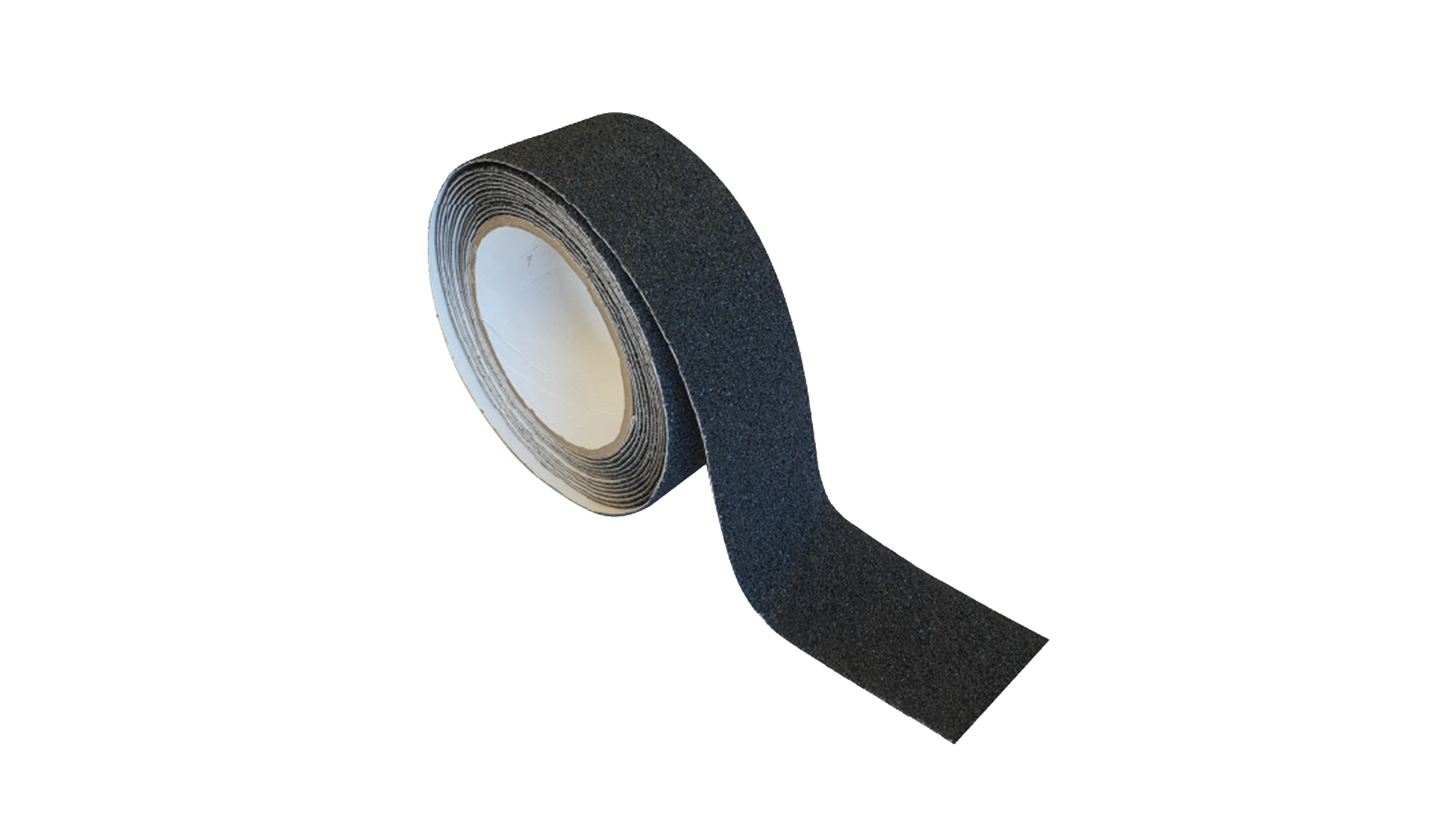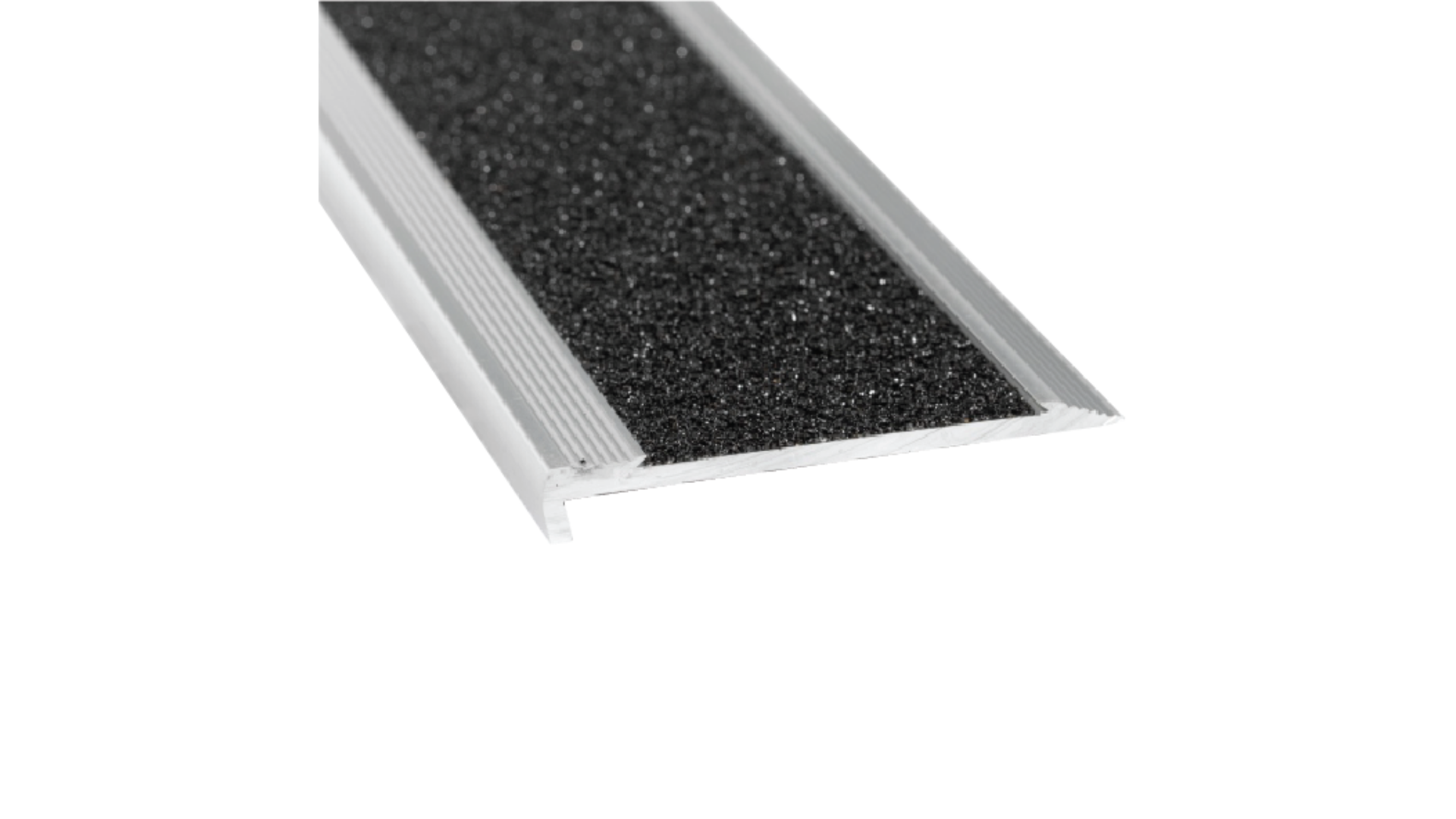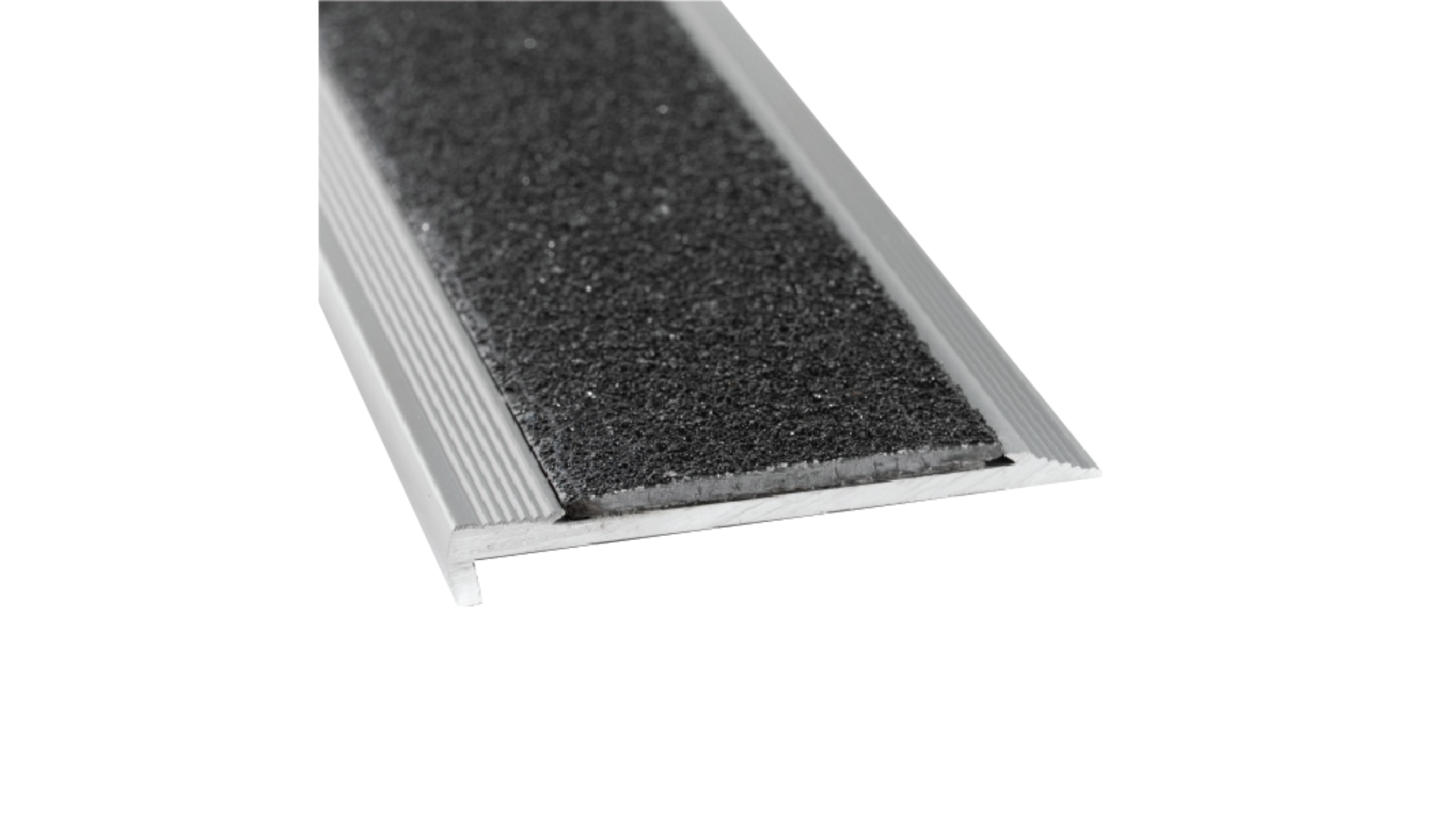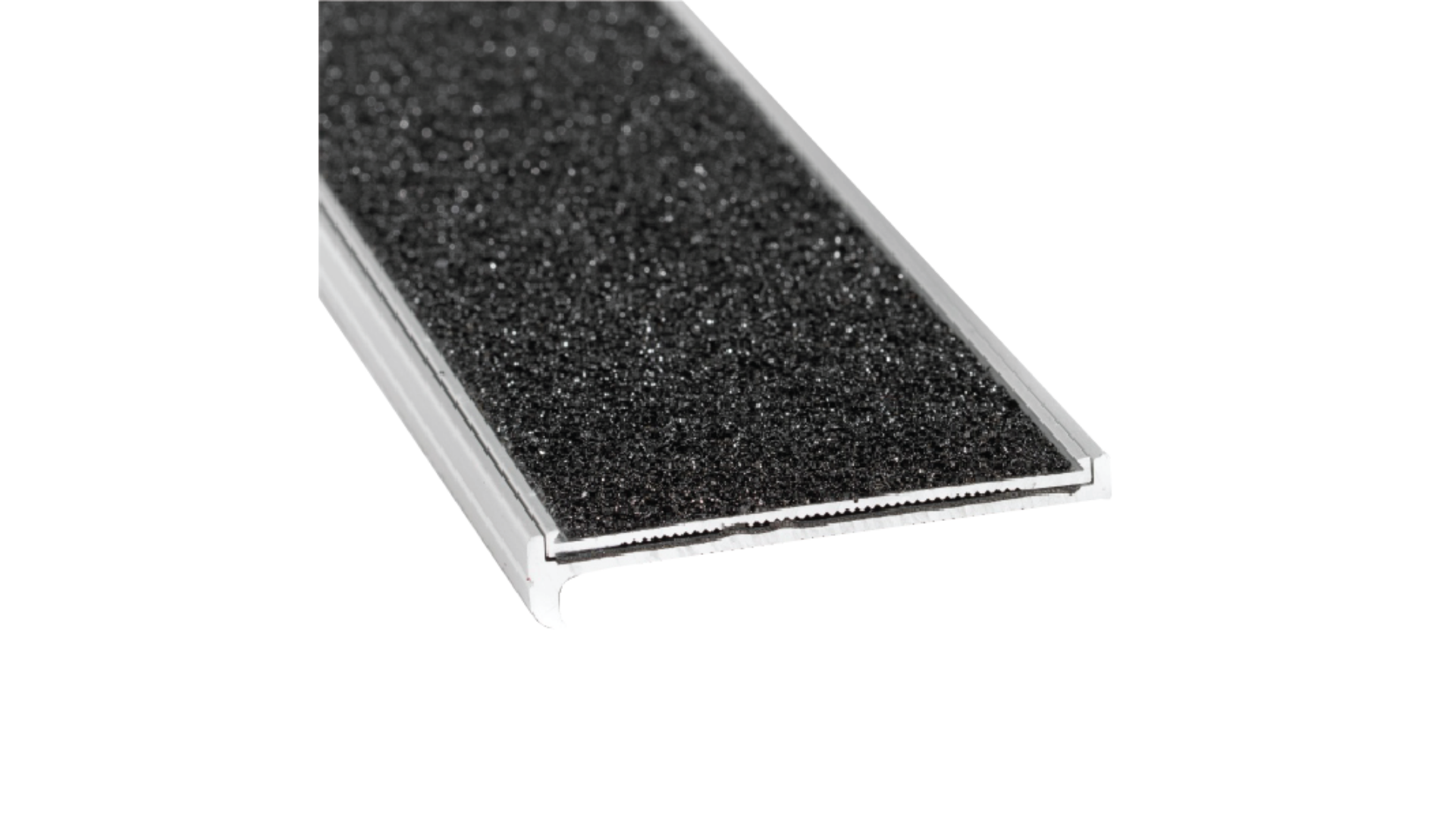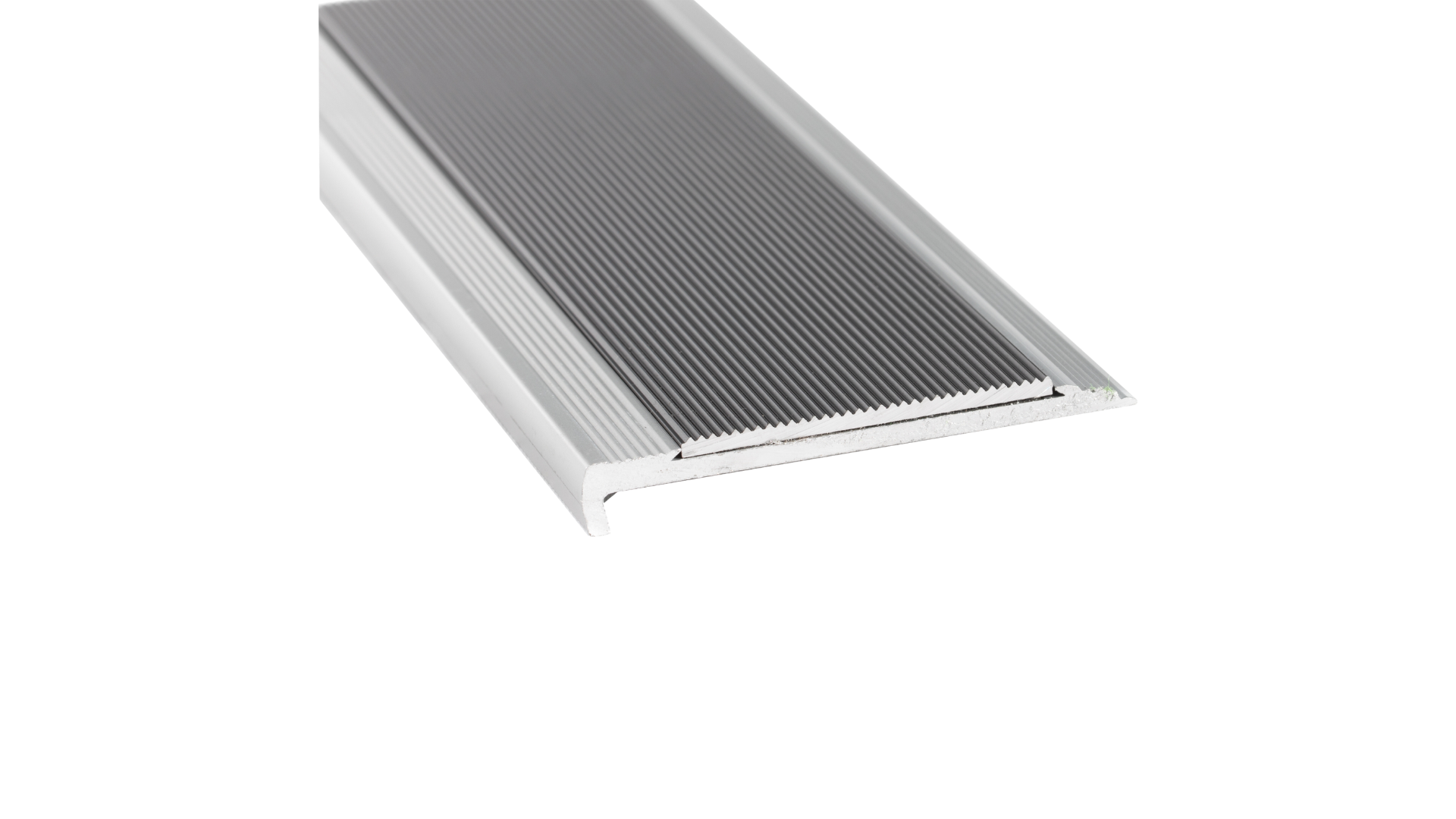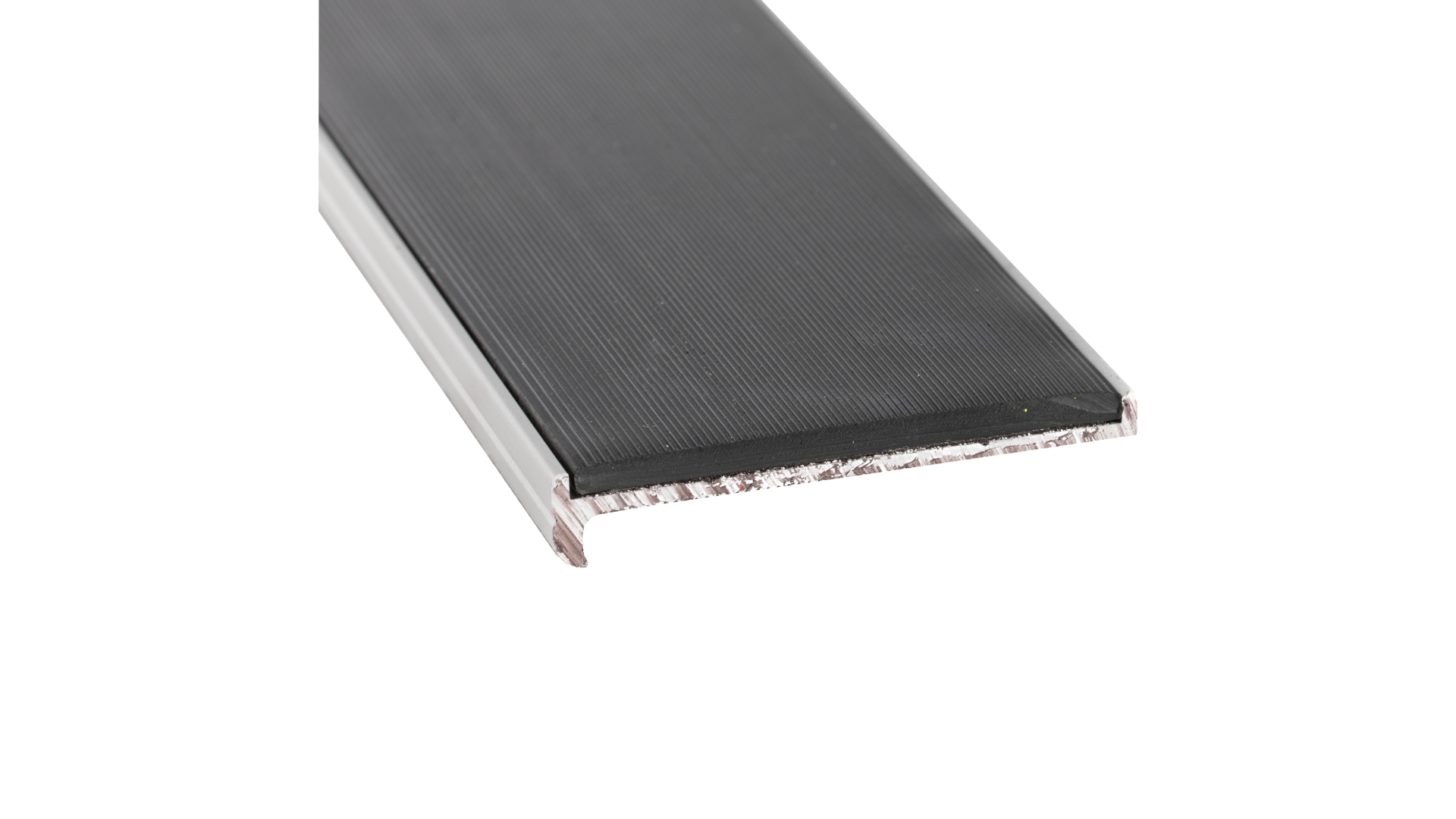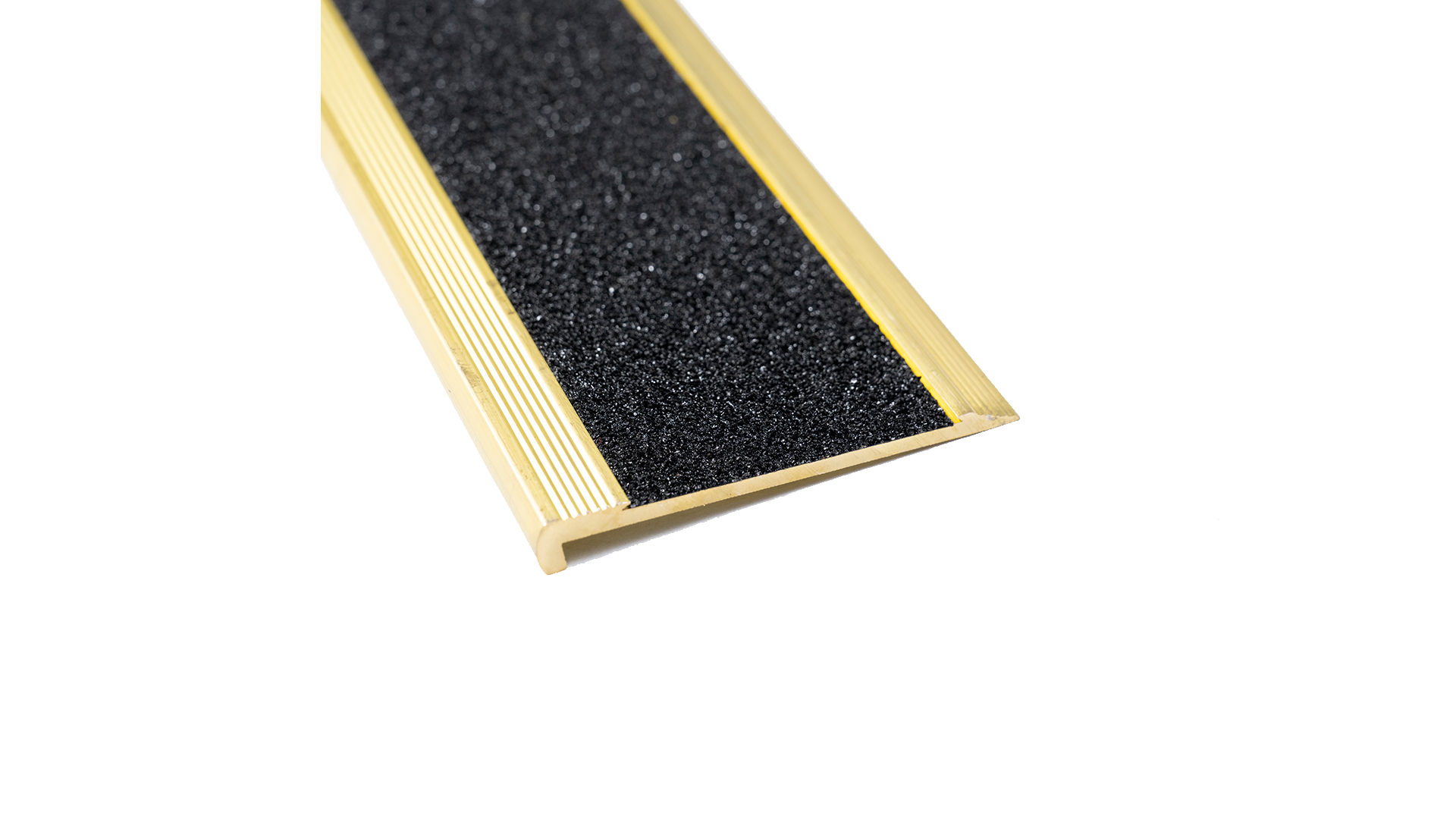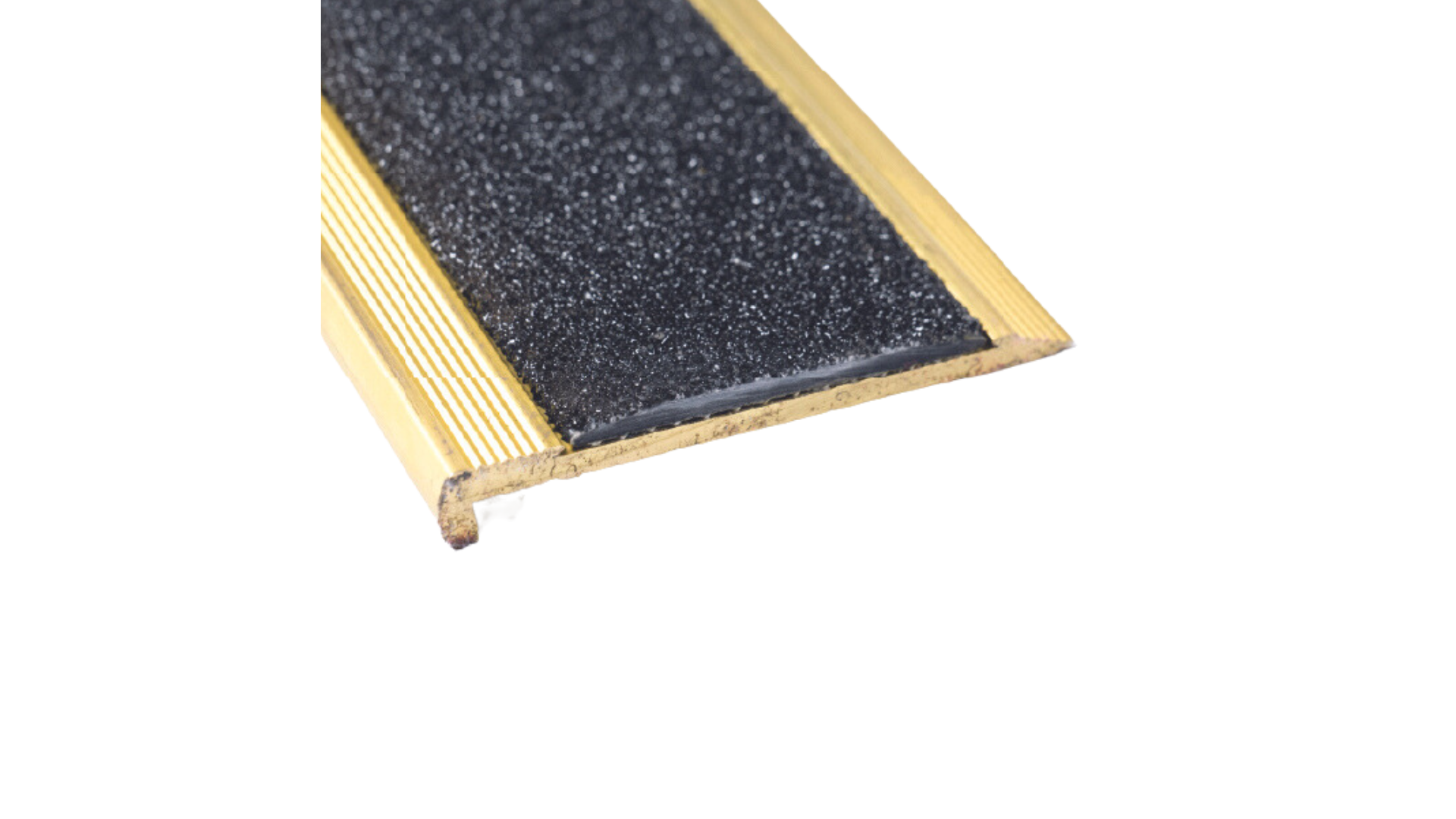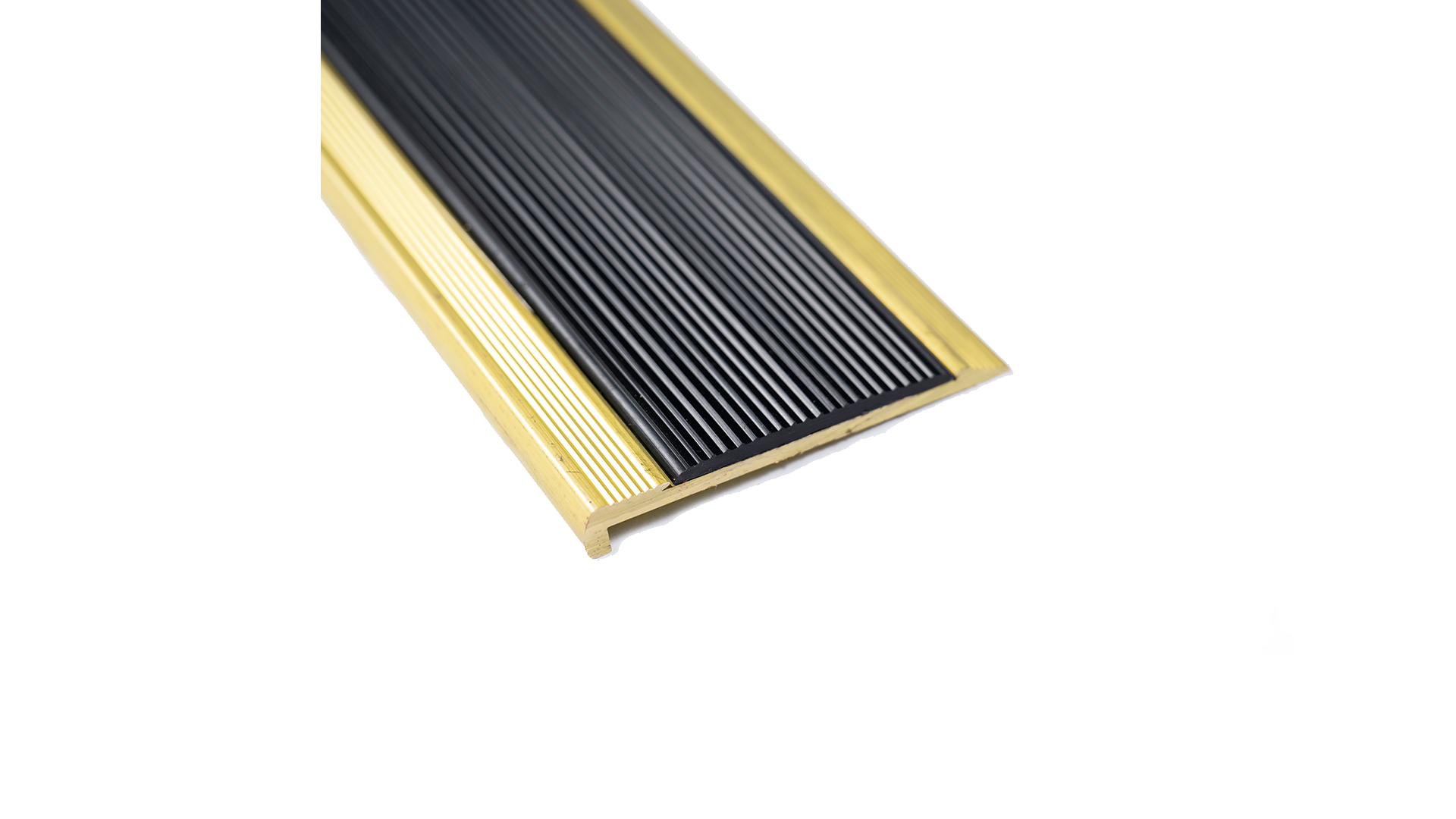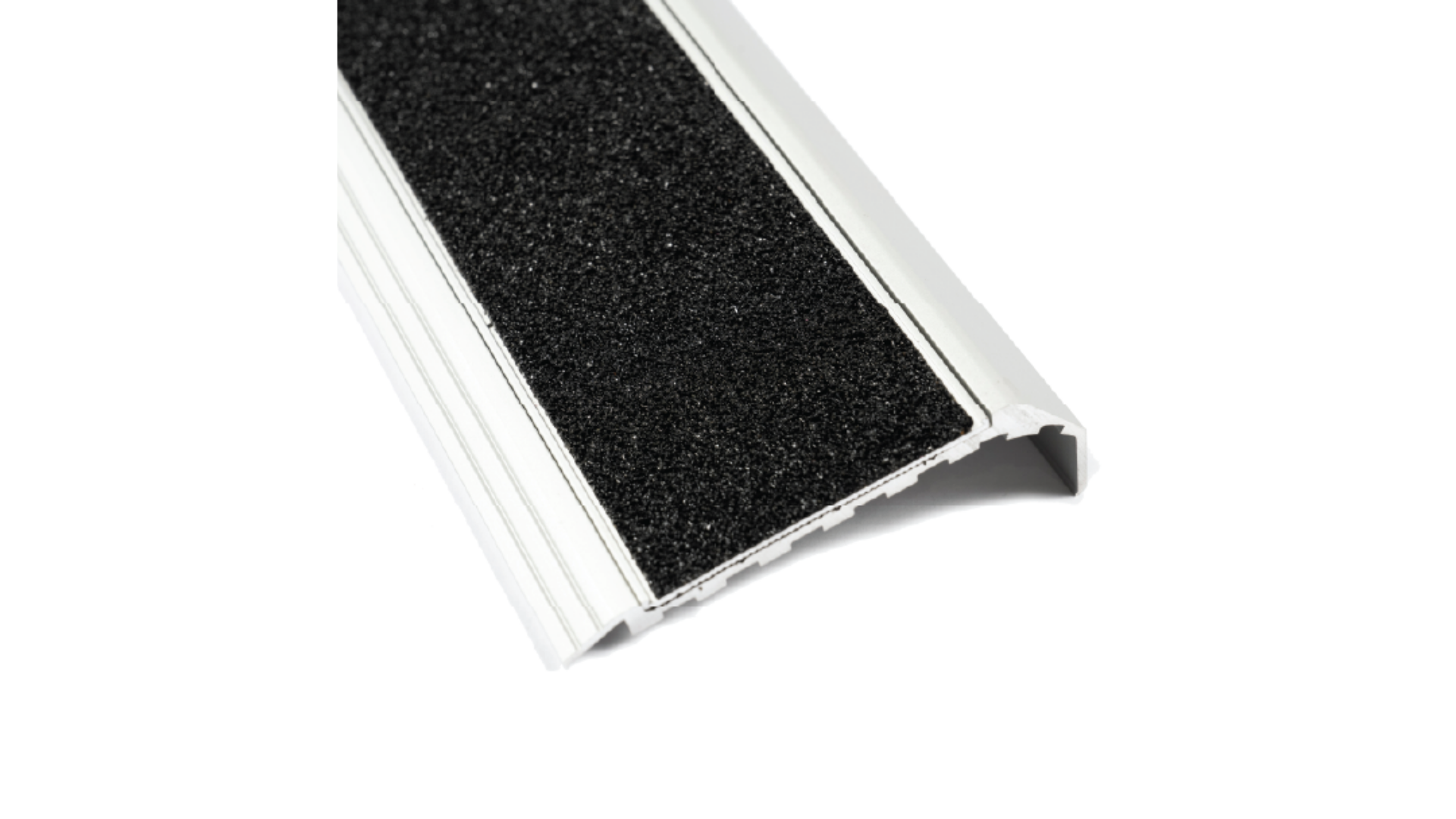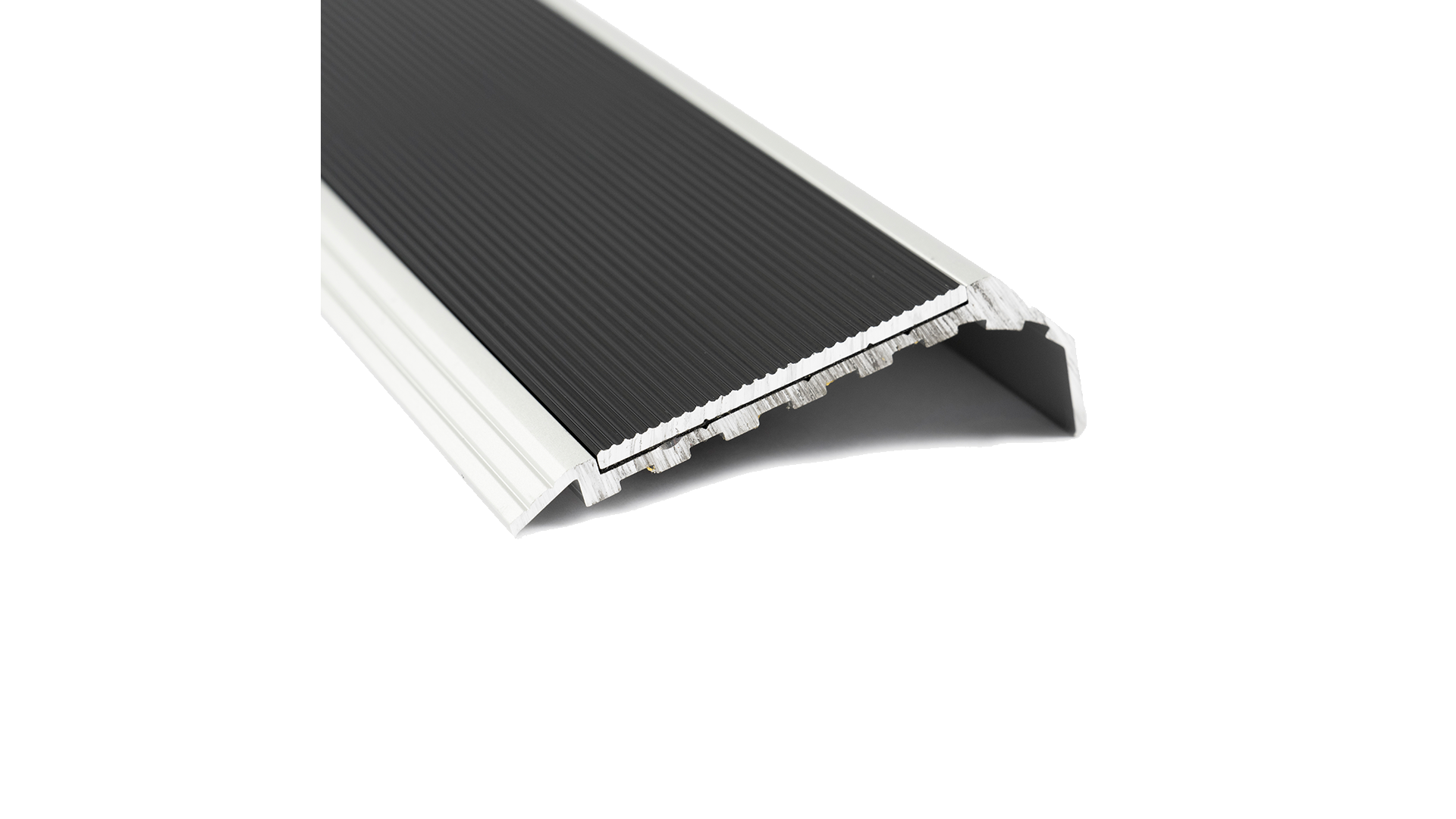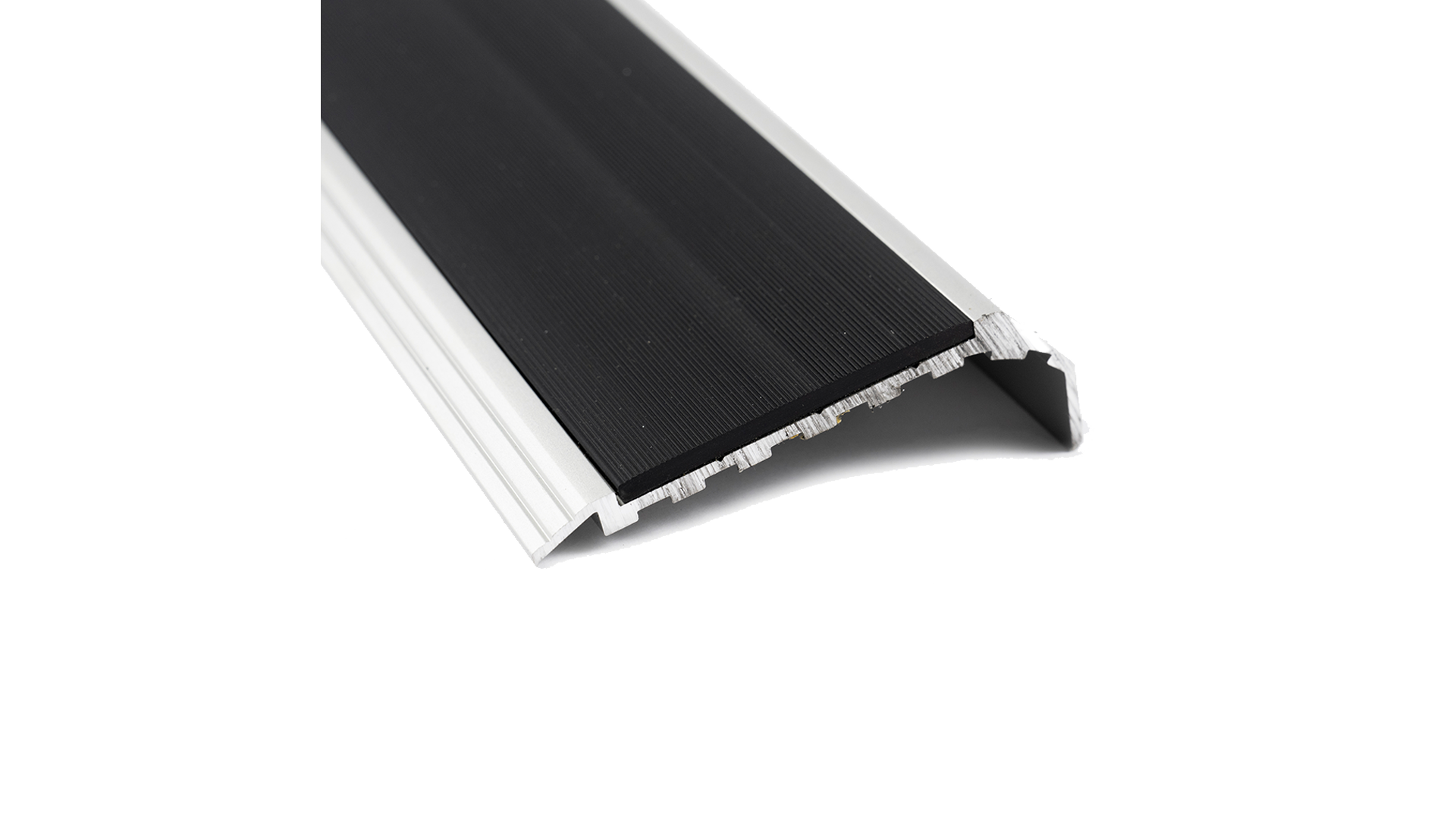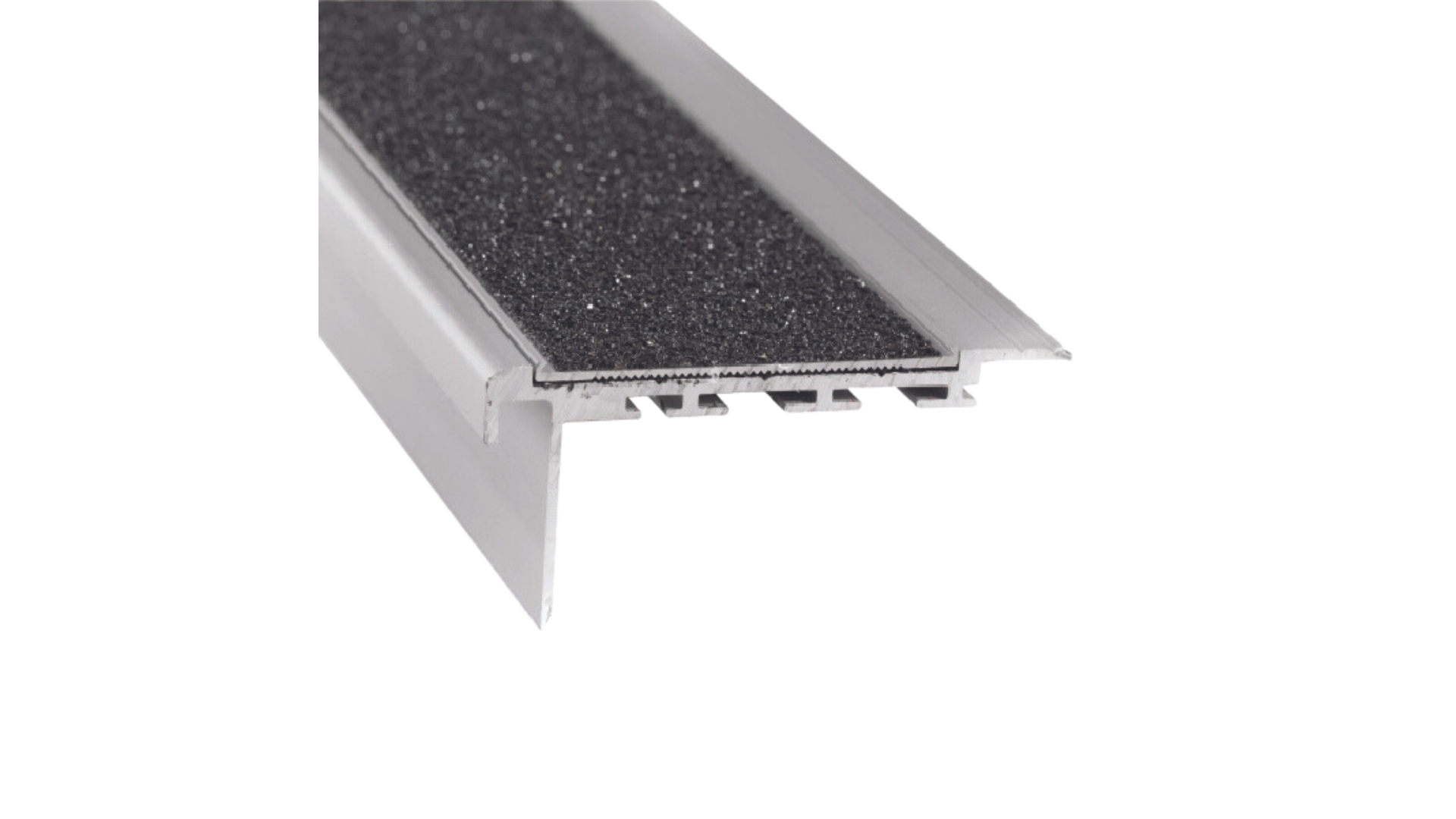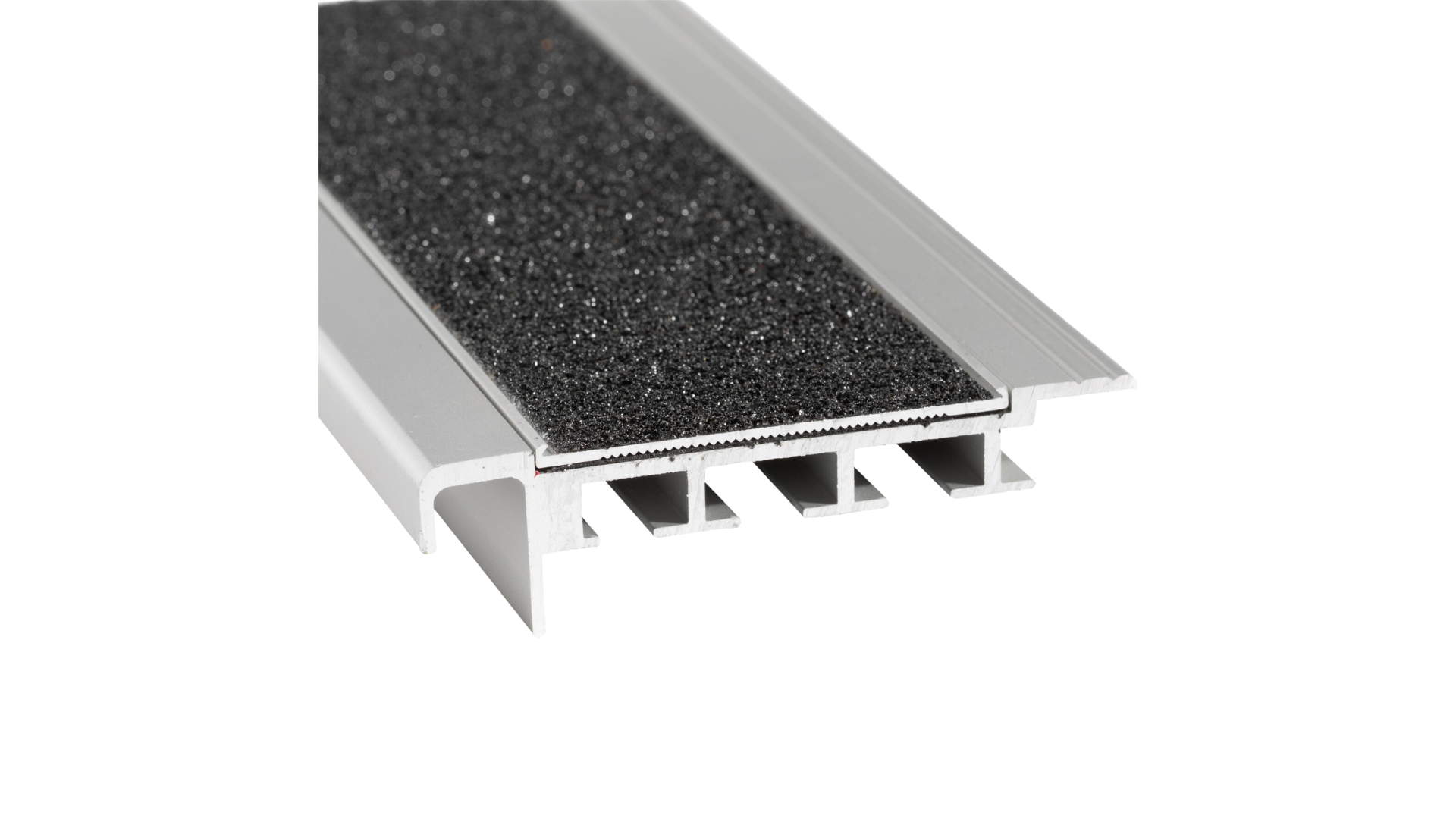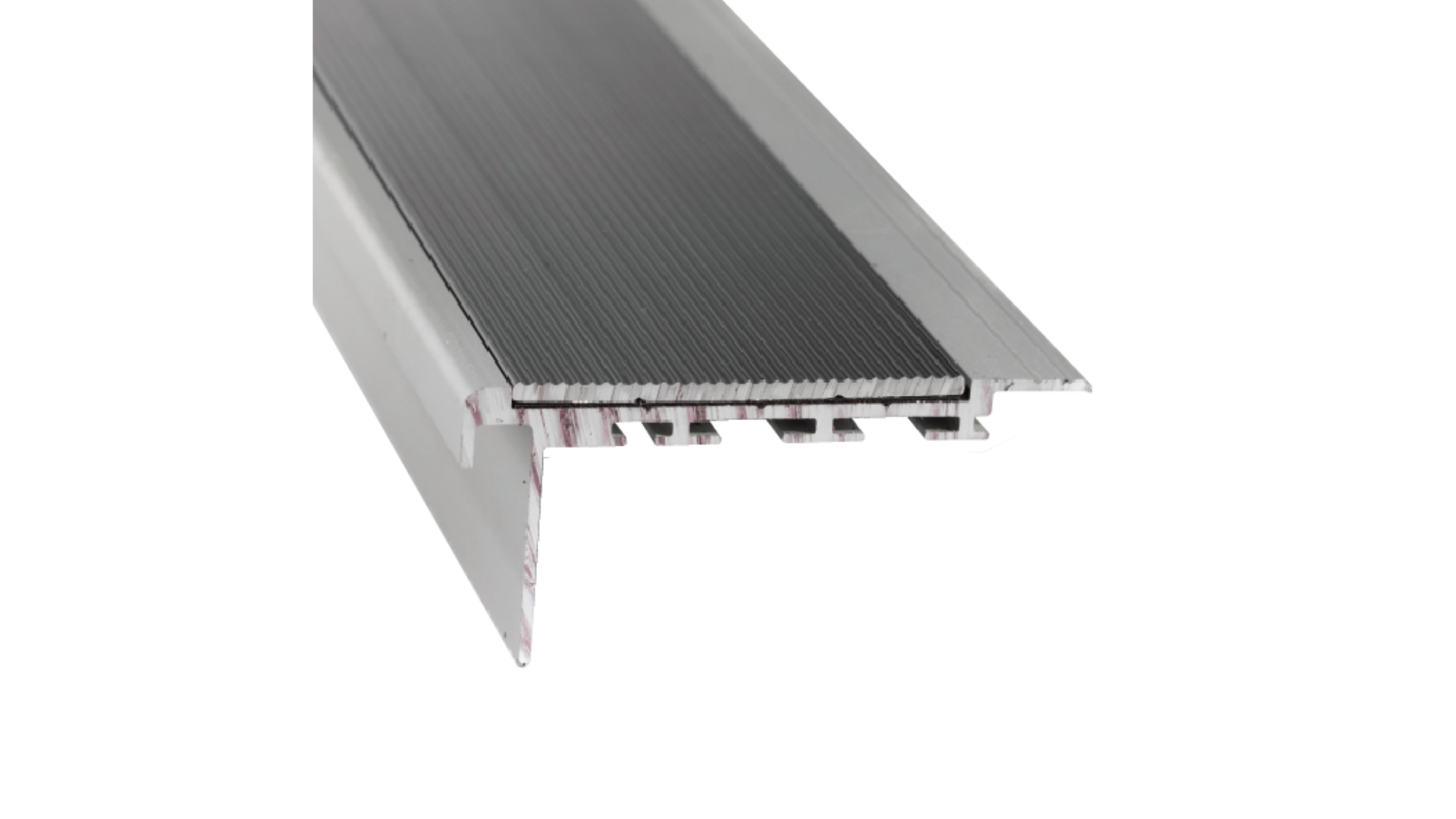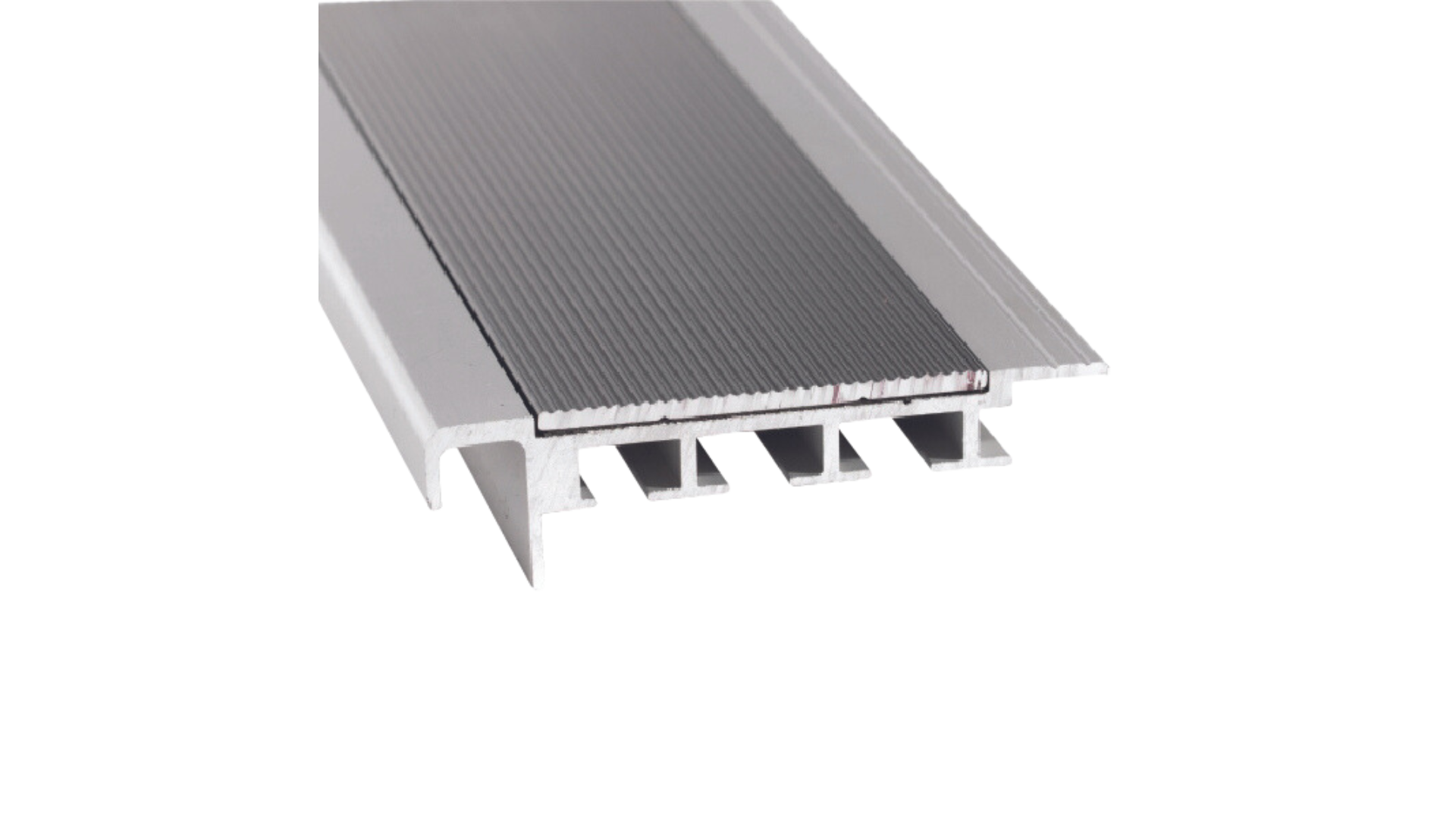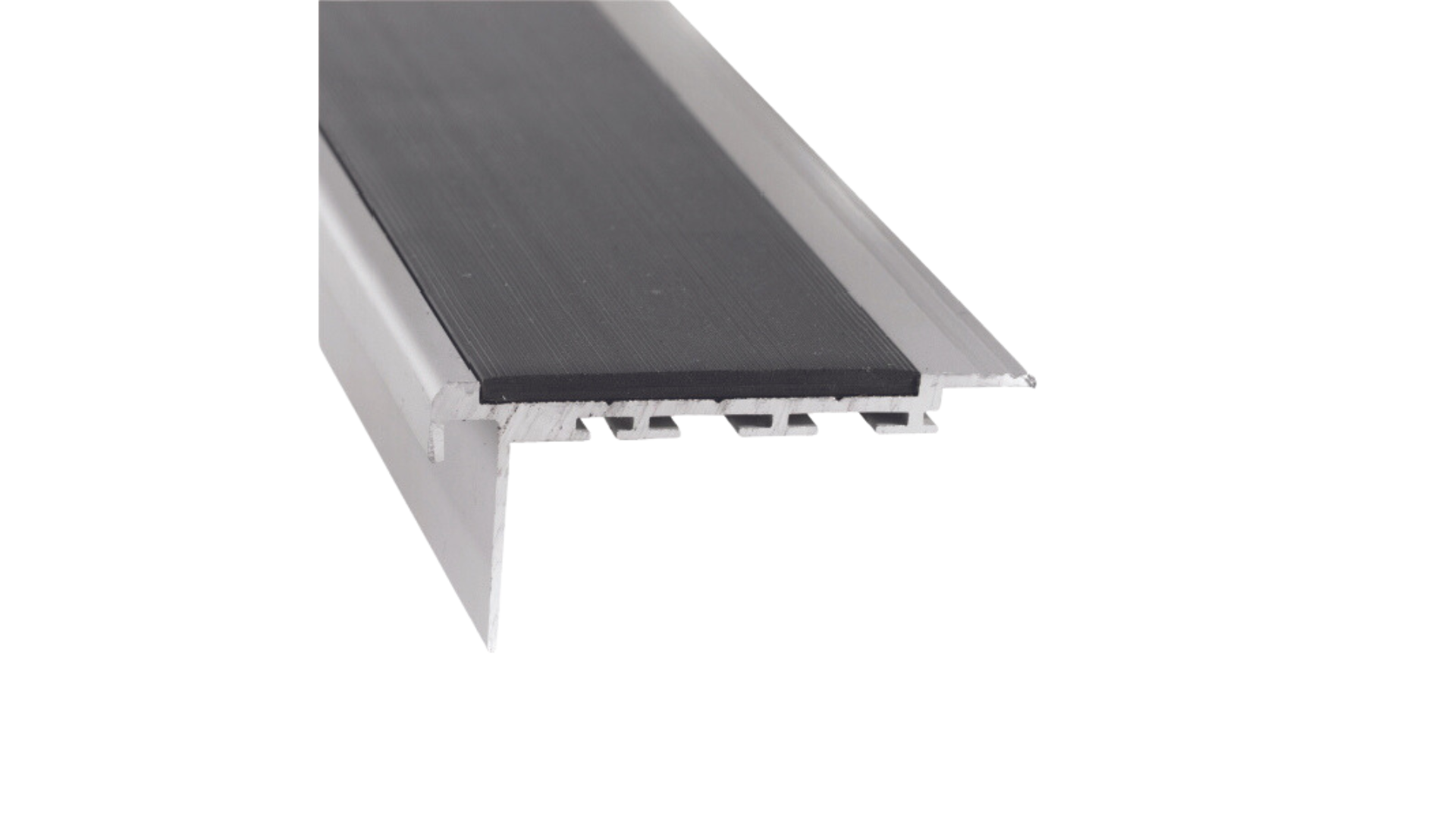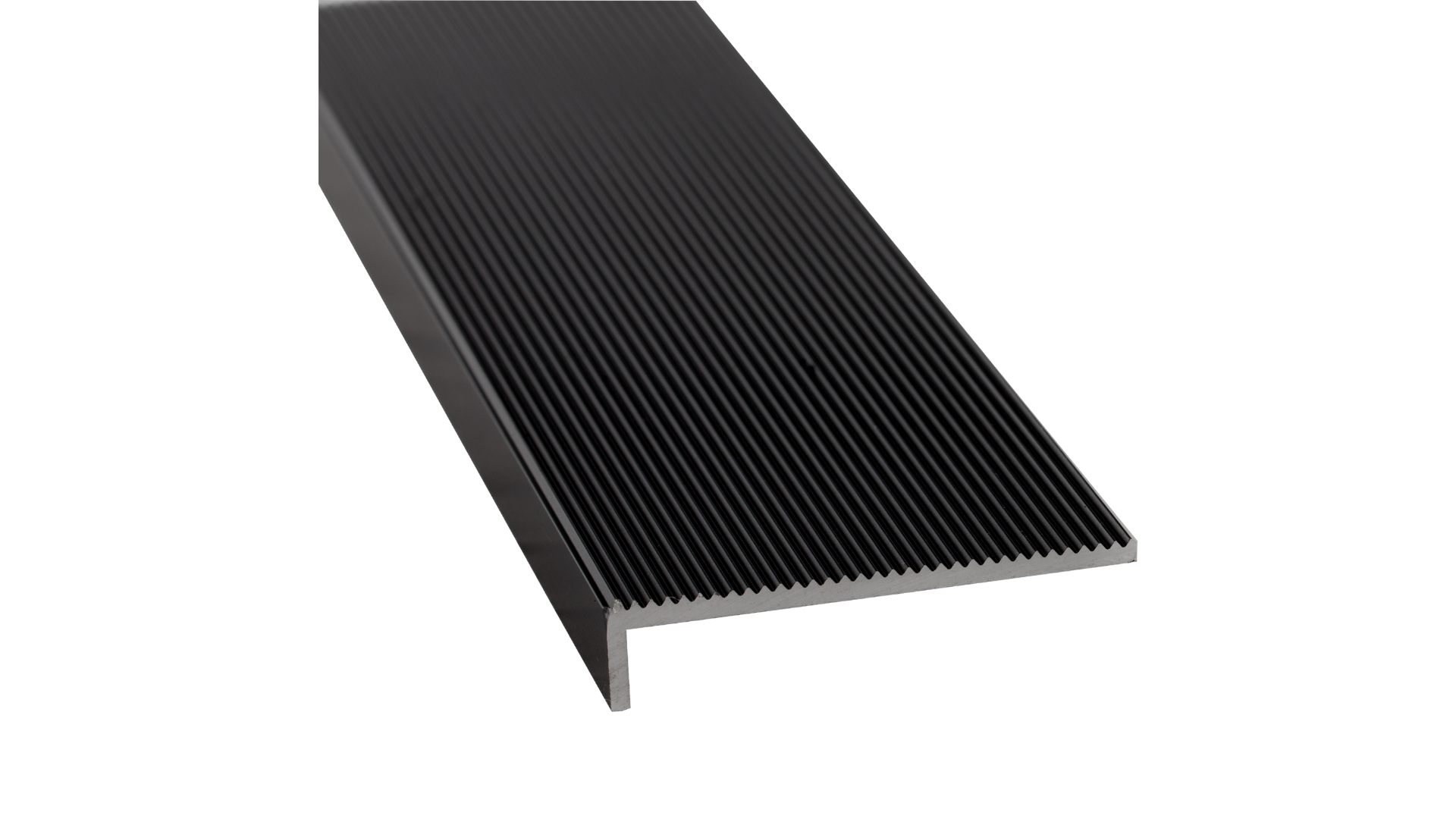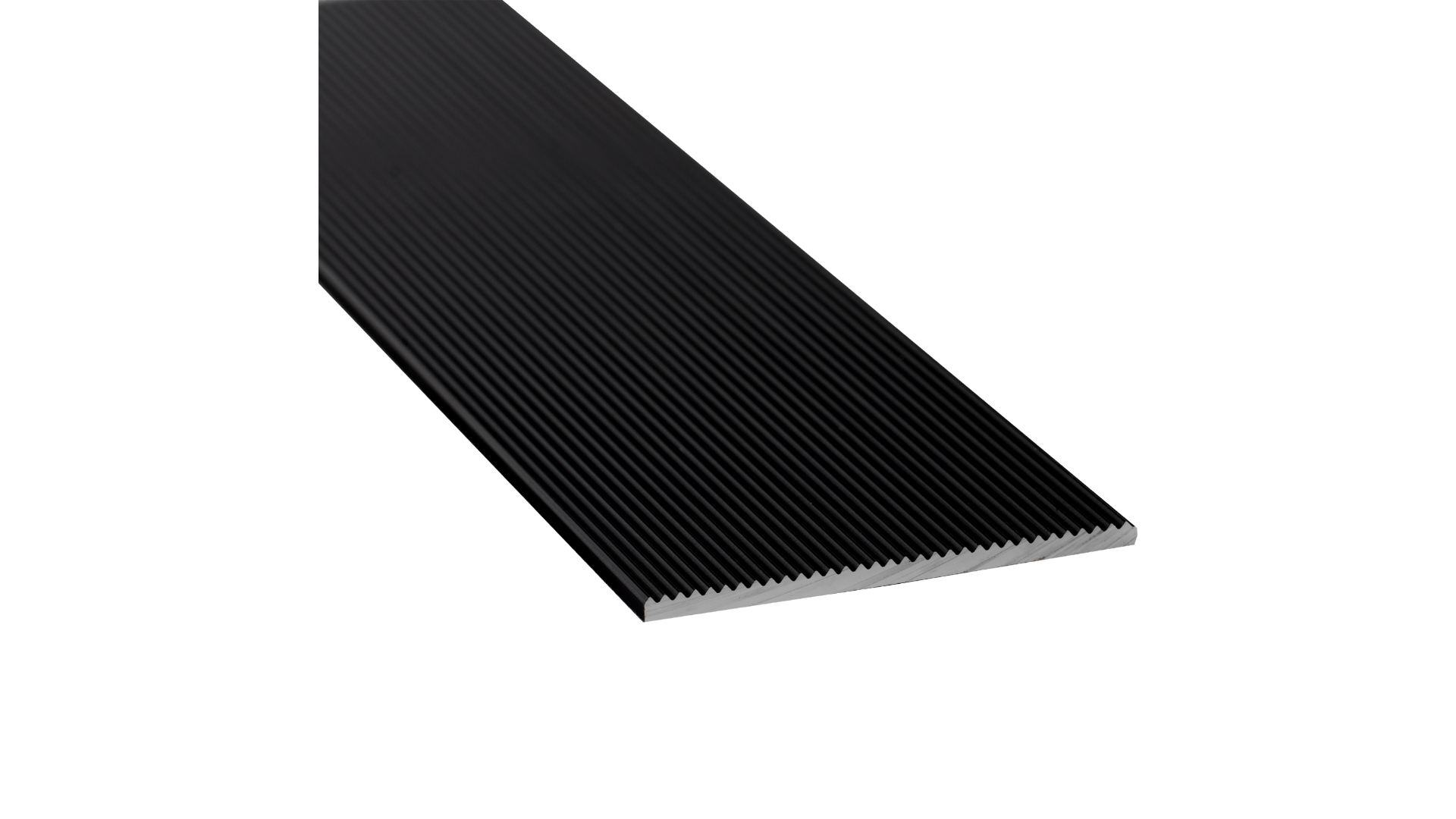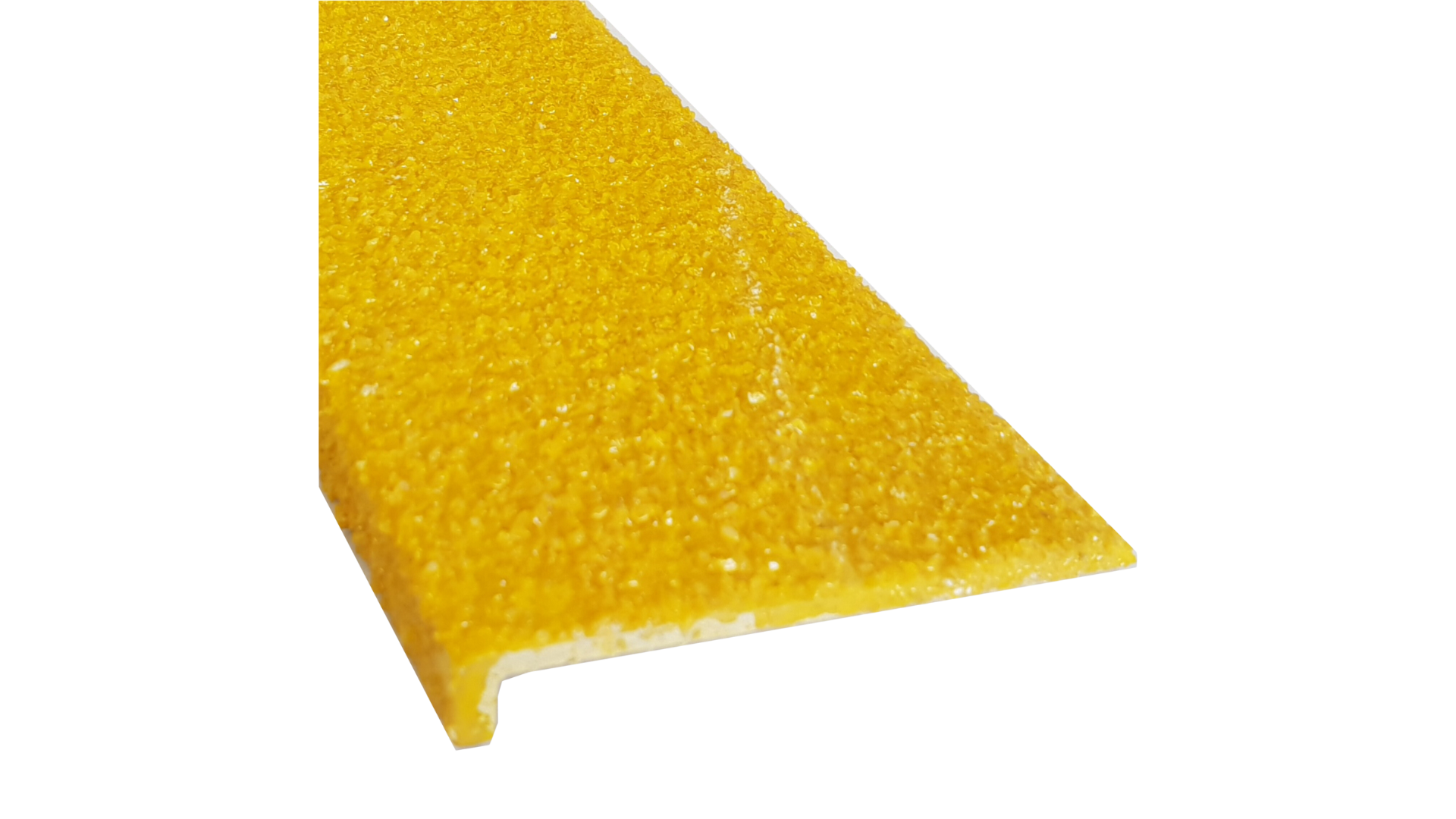Stair Nosing
Stair nosings are used to meet regulations on stair edges. To achieve even the minimum slip rating, you can simply apply anti-slip tape. To achieve an enhanced look of your stair, we have a range of finishes and materials that comply with Australian standards. Our nosing range starts with a simple 50mm wide strip and moves up to an aluminium extrusion that holds a variety of abrasive and ribbed vinyl inserts. These are suitable for both hard and carpet surfaces and we have a range of colours to help you meet contrast resquirements.
When it comes to ensuring the safety and compliance of your staircase, Stair nosings are an essential component. At Sterling Supplies, we understand the importance of meeting regulations on stair edges while enhancing the aesthetics of your space.
Anti-slip stair nosing is the key to achieving a secure footing on your stairs. We offer a variety of finishes and materials that not only meet Australian standards but also provide the peace of mind that comes with top-notch safety. From a simple 50mm wide strip to durable aluminium extrusions with a variety of abrasive and ribbed vinyl inserts, our stair nosings cater to both hard and carpeted surfaces. Moreover, we offer a wide range of colours to help you meet contrast requirements.
At Sterling Supplies, we’ve been the trusted supplier of Brass stair nosing and other high-quality stair nosings for 29 years, serving the entire Australian market. Our products are highly regarded in the commercial flooring industry and have been instrumental in making numerous projects compliant and safe.
Our commitment to versatility means that our Stair nosings are designed to suit any type of staircase. We’ve recently introduced Curved Stair Nosings to meet the most unique design requirements. You’ll also find our stair nosings available in different metals such as Aluminium and Brass, ensuring that you have the flexibility to choose the right material for your project.
Safety is our priority, and we back our commitment with data. We provide slip test reports for all our Non-Slip Stair Nosings, with the majority achieving an impressive P5 slip rating. In the world of slip ratings, a higher number means a lower risk of slipping, and P5 is the highest rating, signifying the lowest risk.
Our Stair Nosings can be seen proudly installed in the stairs of countless commercial spaces. For more details on previous product installations, reach out to our team or visit our (Projects Page) for visual references.
Additionally, we offer a variety of Industrial Stair Nosing solutions suitable for different industrial applications, including the Transola, Appular Carborundum, and Anti-Slip heavy-duty strips.
Enhance stair safety with our wide range of Safety Stair Nosing products, boasting high slip ratings such as P5 for exterior and outdoor stair applications. Our stair nosings are available in various aluminium and insert colours, ensuring not only safety but also high visibility and compliance.
Ready to make your stairs safer and more compliant? Contact us today for pricing on our stair nosings. Our team is also here to recommend options for custom stair nosing, tailored to your specific needs.
Sterling Supplies – Your partner in stair safety and compliance.
Stair Nosing Categories
Aluminium Stair Nosing
Our Aluminium Stair Nosing Range is the most preferred product range across projects. It is the widest...Read MoreRibbed Stair Nosings
Our range of Rubber Stair Nosings or as we call it Ribbed Stair Nosings features a rubber...Read MoreBrass Stair Nosing
Brass stair nosing is a popular choice for many reasons. It is durable, long-lasting, and easy to...Read MoreAbrasive Stair Nosings
At Sterling Supplies, we understand that certain environments demand exceptional traction and durability...Read MoreRecessed Stair Nosing
At Sterling Supplies, we understand that certain environments demand exceptional traction and durability...Read MoreSurface Mount Stair Nosing
At Sterling Supplies, we understand that certain environments demand exceptional traction and durability...Read MoreVideos
PRICING GUIDE
Comprehensive listing of our products & prices
PRODUCT CATALOGUE
View details of our entire product range
FAQ
Stair nosing are protective profiles designed to be installed on the edge of stair treads. They serve several important purposes, including improving safety by providing a slip-resistant surface, enhancing visibility by defining the edge of each step, and protecting the stair edges from wear and tear.
Stair nosing are often equipped with slip-resistant surfaces, such as ribbed patterns or abrasive strips. These features enhance traction, reducing the risk of slips and falls on stairs, particularly in high-traffic or wet areas.
Yes, many building codes and safety standards, such as AS/NZS 1428.1:2009, specify the installation of stair nosing in certain situations. Compliance with these regulations is essential for ensuring the safety and accessibility of stairs in public and commercial buildings.
Our stair nosing is available in different materials such as aluminum, brass and fibreglass.
When selecting the appropriate stair nosing, consider factors such as the level of foot traffic, the stair environment (indoor or outdoor), and the desired aesthetics. Our team of experts will also be able to help you with the appropriate stair nosing choice for your space to ensure maximum safety.
Stair nosing can be installed using various methods, including adhesive bonding, mechanical fasteners, or recessed installation. The specific installation method will depend on the nosing material, the stair construction, and the application requirements.
Yes, at Sterling Supplies we offer customization for the nosing to fit specific stair dimensions. Customized stair nosing ensures a precise fit and optimal performance.
Yes, compliance with the Stair Nosing code is mandatory for all types of buildings in Australia. The code applies to commercial, public, residential, and industrial structures, aiming to create safe and standardized stairways across the country.
Compliance with the stair nosing code is crucial for ensuring stairway safety. By adhering to the specified dimensions and requirements, stair nosing can effectively improve slip resistance, define the edge of each step, and reduce the risk of accidents such as slips, trips, and falls on stairs. Following the code helps create a safe and accessible environment for all users.
Yes, stair nosing can often be customized while still adhering to the code’s requirements. We offer a variety of profiles, materials, and finishes that meet the specified dimensions and slip resistance criteria. Customization options allow for aesthetic preferences while maintaining compliance with safety standards.
According to the stair nosing code in Australia, the maximum projection of the stair nosing over the stair tread must be between 10mm and 25mm. This ensures that the nosing provides a sufficient leading edge for enhanced visibility and slip resistance while avoiding excessive protrusions that may pose tripping hazards.
LRV stands for Light Reflectance Value. In the context of stair nosing, LRV refers to the measurement of how much light a surface reflects. It is an essential factor in ensuring proper luminance contrast between the stair nosing and the adjacent step or flooring material, making stairs more visible and safer, especially for individuals with visual impairments.
LRV is important when choosing stair nosing because it affects how well you can see the nosing against the step or floor around it. If there’s a noticeable difference in LRV values, it makes the stair edges stand out more, making it easier to see and reducing the chances of tripping.
LRV is measured on a scale from 0 (completely absorbing all light) to 100 (perfectly reflecting all light). For stair nosing, the ideal LRV range is typically between 30 and 70. This range ensures an adequate contrast with the adjacent surface while meeting accessibility and safety standards.
To ensure proper luminance contrast, it’s essential to select nosing with an appropriate LRV range, considering the LRV value of the adjacent step or flooring material. The luminance contrast should meet the guidelines set forth in relevant building codes and accessibility standards.
Yes, we provide LRV information for all our stair nosing. This information helps architects, designers, and builders make informed decisions during stair construction or renovation projects to achieve the required luminance contrast.
Proper luminance contrast achieved through LRV compliance plays a vital role in building accessibility and safety. It enables individuals with visual impairments to distinguish stair edges clearly, making stairways safer and easier to navigate for everyone.
